A red poppy is a symbol of remembrance of the first world war and of all the lives lost. On 11th November each year there is a Remembrance Day ‘Lest we forget’ the tragedies of the past and so we do not repeat them in future. Did you know that remembrance poppies were originally designed so they could be made one handed by disabled servicemen?

Poppies are used as a symbol of remembrance because after the fighting had stopped thousands of poppies appeared on the former battlefields known as Flanders fields. The reason for the poppies blooming in such unusual numbers was due to the lime from the broken masonry scattered across the ground from artillery bombardments. The lime was a great fertiliser for the poppies creating the perfect environment for them to grow.
In honour of remembrance day here are 13 simple poppy activity ideas that children of all ages can enjoy.

1. Felt and fabric poppies
Felt poppies are really quick and simple to make. You just need some red and green felt to form the petals and leaves and either black buttons or black felt for the centre. First cut the red felt into a solid figure of eight shape to form the poppy petals. Next cut the green felt into a simple leaf shape. Finally glue or sew the two pieces together and then add a black button or a black dot of felt to the centre. You could also use other fabrics for this but felt tends to be easier to cut and shape. You could use your felt poppies as memorial decorations or add them to wreaths. You could also turn them into badges by adding pins or safety pins to the back.

2. Poppy Potato Prints
Poppy potato prints are really easy and fun to play with. They make great invitations to play for children of all ages and you can use the potato prints to make patterns, pictures, cards or recyclable wrapping paper. It’s also great fun to experiment printing on different types of surfaces and textures from paper to fabric, foil and wood. And as long as you use non toxic paint you can even print on outdoor surfaces like paths, trees and leaves. t.
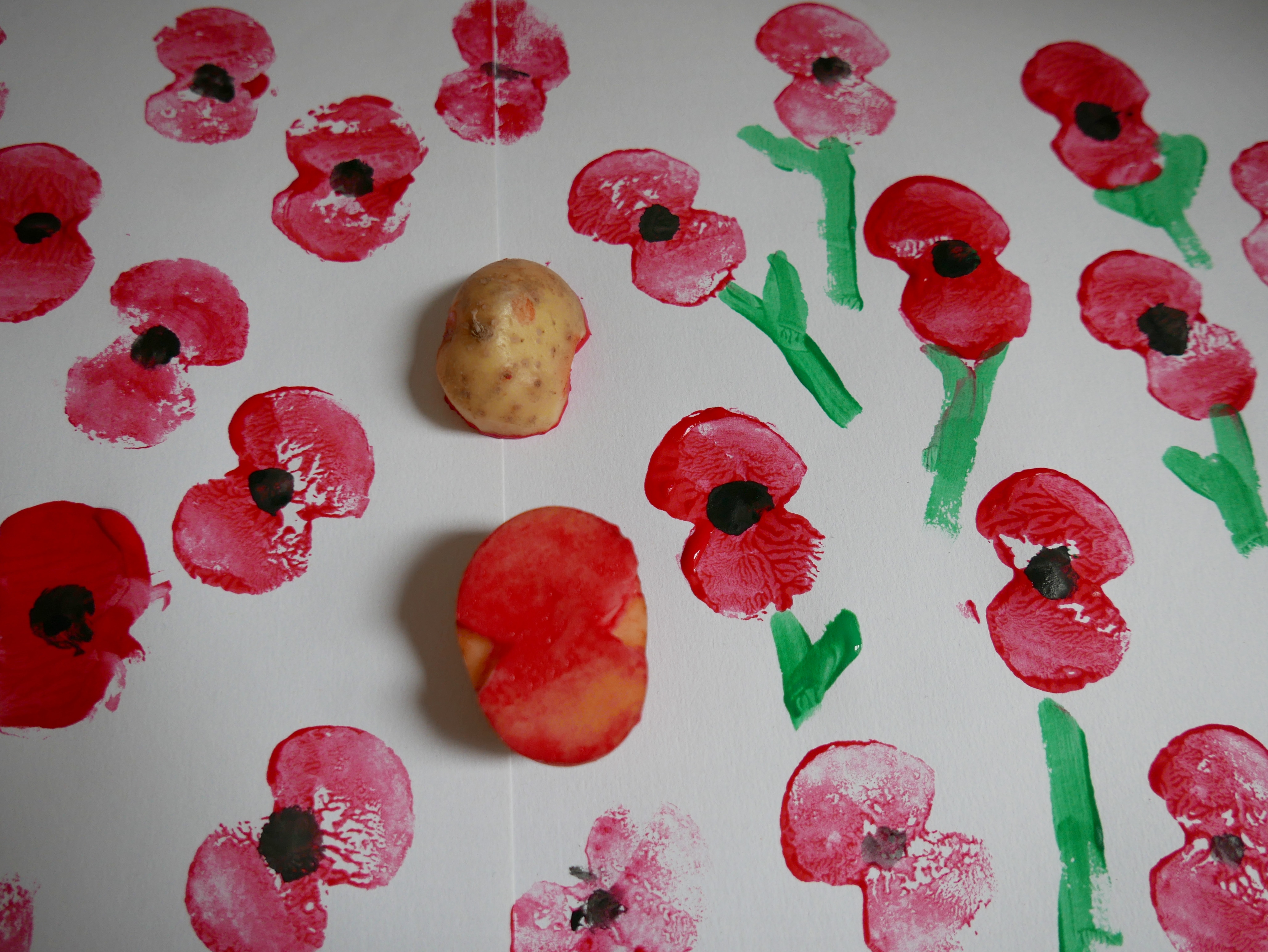
To make your potato prints all you need is a small potato cut in half and some red and black paint. Simply cut two triangular shapes into either side of the potato to form the two top and bottom petal shapes on your poppy. (It helps to dry the potato on a piece of kitchen towel before you print). Dip the potato in red paint and then print onto paper. Paint, stick or draw on a black dot for the centre. You can add green stems and leaves if you want to afterwards but they look equally as effective left as just red and black poppies.
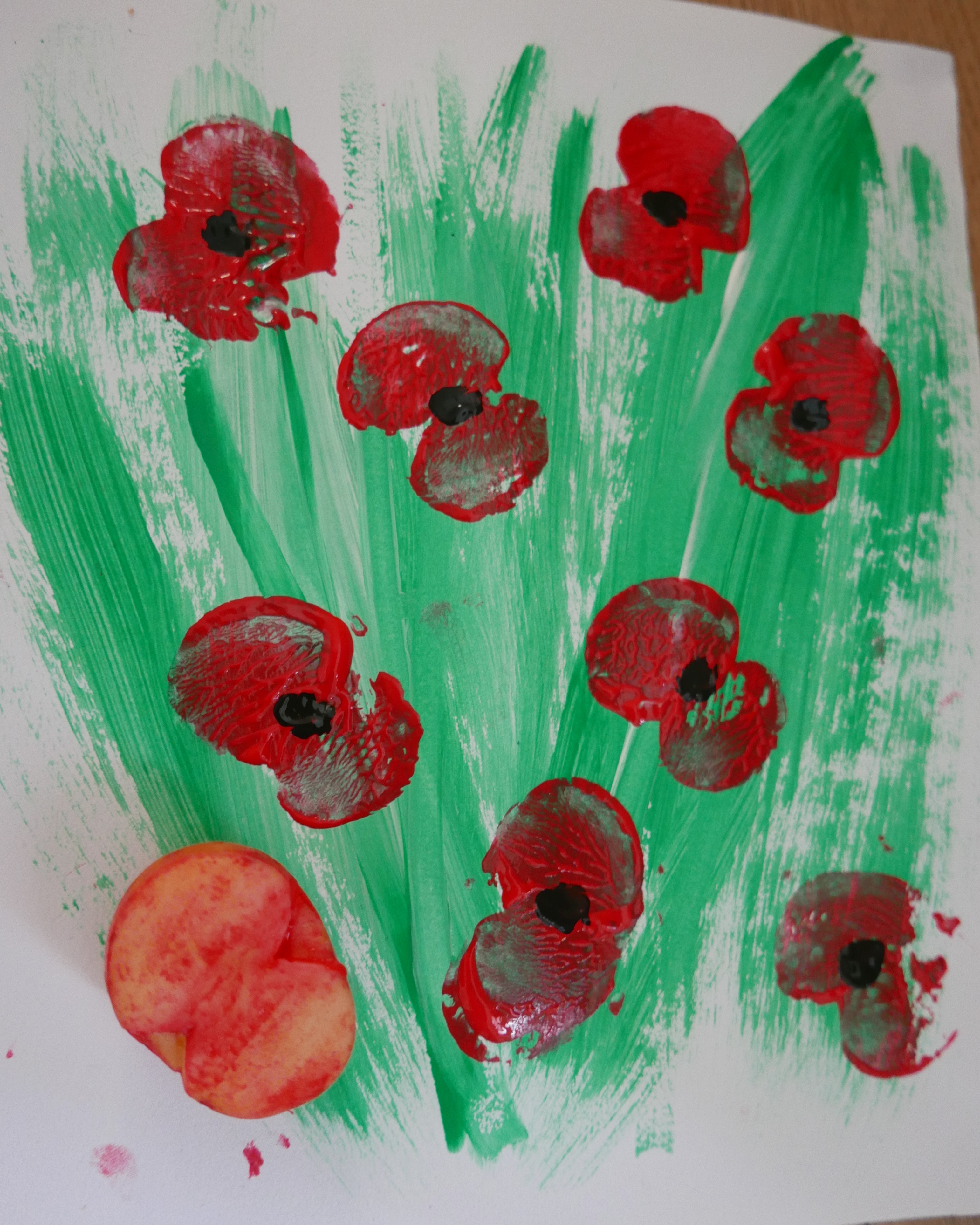
3. Painted pebble poppies
We love finding painted pebbles and rocks when we are out and about, it’s wonderful to see the creativity and love that people put into them. You can easily find pebbles to decorate yourself by looking in your garden, on a nature walk or along the shore. All you need then is some paint or permanent markers to paint or draw colourful designs onto the pebbles. *Safety note please be aware of the choking hazard of pebbles with smaller children. How about painting poppy design on the pebbles. You can use them as memorial tributes, decorations or in pretend play and games.

4. Egg carton poppies
We hate to waste anything and recycling and reusing materials is one of many small things we can all do to help the environment. So instead of chucking used egg cartons we like to find ways to use them in crafts and activities. Egg carton poppies are so quick and easy to make, especially for little learners. Simply cut out the bottom cups from an egg carton. Then paint them red and the paint or stick on a black dot into the centre of the poppies.

5. Cardboard tube poppies.
Cardboard tubes left over from wrapping paper or kitchen roll are great to use in arts and crafts. To make carboard tube poppies simply cut the tube into poppy sized sections. Then cut rounded edges at the tops and bottoms of the tube and cut a triangular notch into each side. Finally paint, colour or collage your poppy in red and add a black centre to the middle. You can then use your penguins as decorations, story props, napkin rings or even fill them with sweets or presents to give as gifts.

6. Poppy flowers
Or you could make a simple poppy using a pipe cleaner, red tissue paper or fabric and a black paper or fabric dot. Lay 3-4 layers of red tissue paper fabric on top of each other. Cut them into a circle, the fold the circle in half. Pinch and twist the bottom half. Attach a green pipe cleaner onto the twist. Bend halfway down to form a leaf. Then simply fold out the petals and glue the black dot in the centre of your poppy.

7. Poppy wreaths
You can also use your tissue paper r fabric poppies to make a wreath. Simply use a paper plate with the centre cut out as the base for your wreath or a piece of card cut into a ring. Then stick several tissue paper or fabric poppies and green paper leaves around the circle to decorate the wreath.

8. Poppy nature art
Nature art (also sometimes called land art) is a wonderful nature activity that encourages creativity and fine motor skills in children of all ages and abilities. All you need is some imagination and natural materials like leaves, sticks, stones, pine cones bark and grass ect. You could have a nature treasure hunt in the garden or go on on a nature walk to find natural materials to play with.
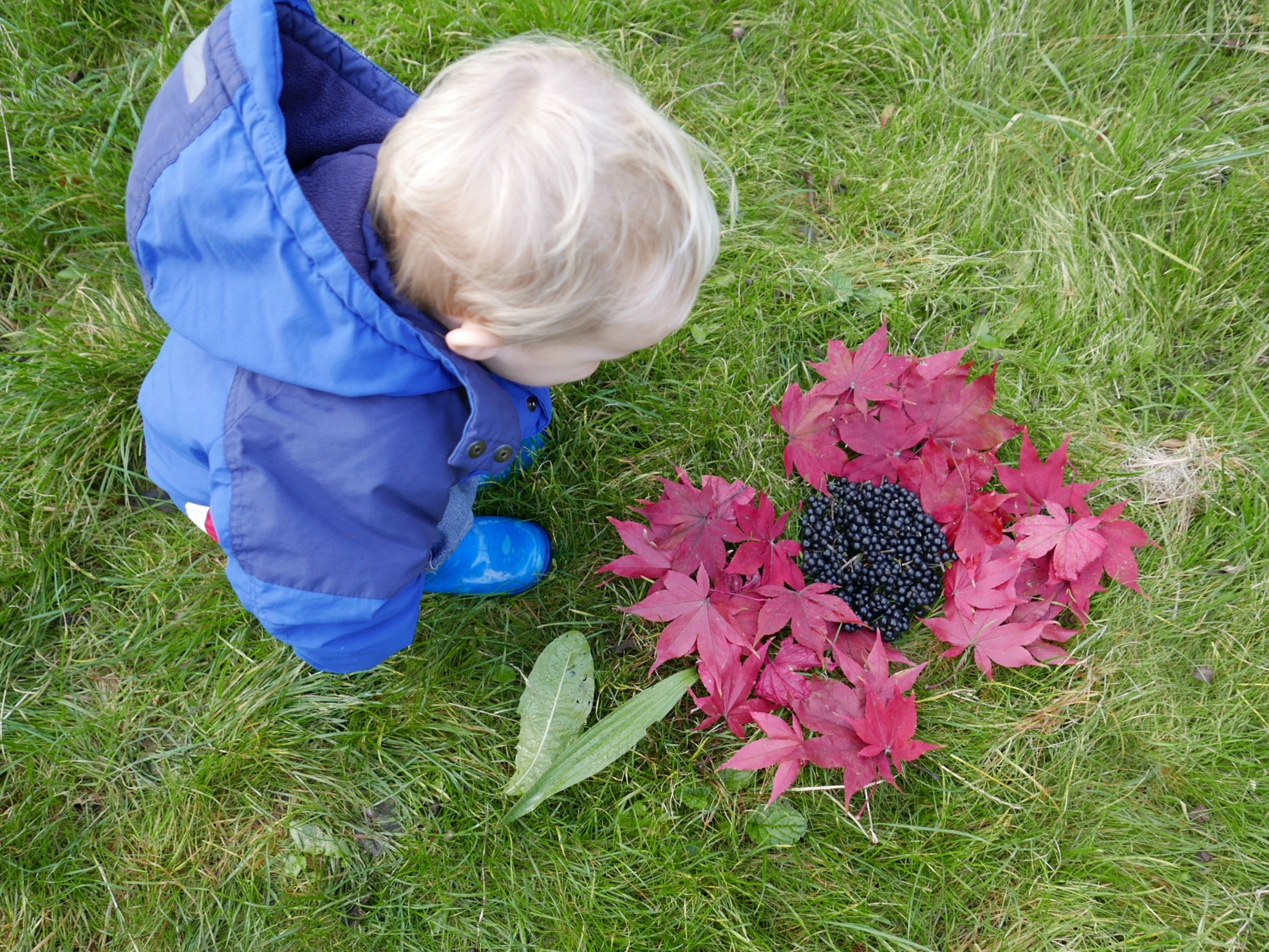
We used red and green leaves and berries* to make our poppy. Why don’t you see what materials you can find to use? *Please just be aware that berries can be highly toxic. It’s important to ensure all children are carefully supervised and you pre warn them not to eat any. On windy days it’s hard to make a picture before the leaves blow away. So you could always bring your leaves and found objects home to play with. You could also glue your finished pictures to some paper or take photos to print out so you can keep your art and enjoy it for longer.

9. Cardboard cut out poppies
We hate to waste anything and recycling and reusing materials is one of many small things we can all do to help the environment. So instead of chucking used cardboard boxes we like to find ways to use them in crafts and activities. It’s so easy to cut out a poppy shape from old cardboard. The children can then paint, draw or collage onto the cardboard poppy shape to colour it in. You can make the poppies as big or as little as you like. They make fab decorations.
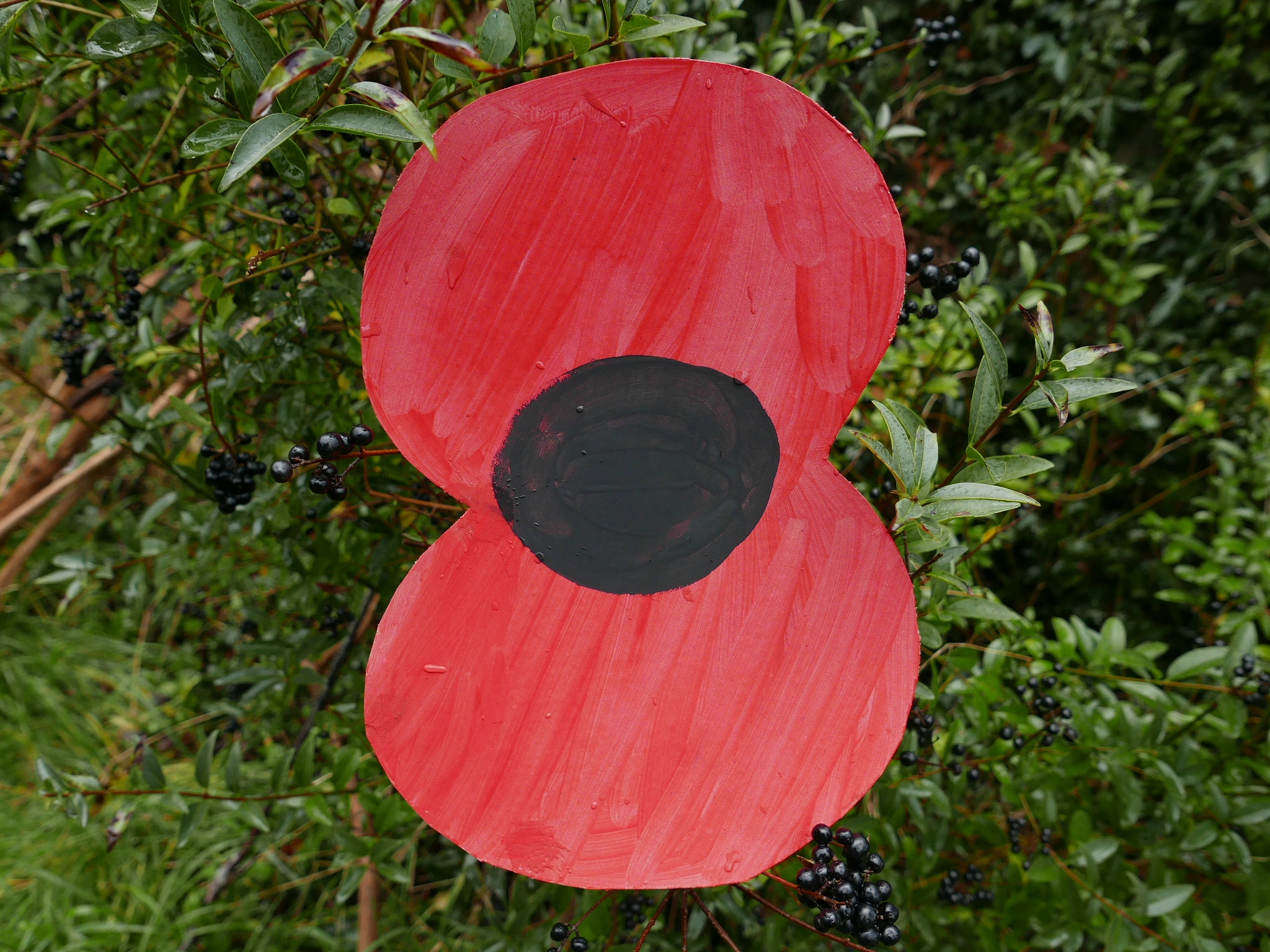
10. Poppy lanterns and vases
Poppy lanterns and flower vases are easy and simple to make. All you need is a glass jar and either some paint or permanent marker pens. Then simply paint or draw on some red poppies. You can then either use the jar as vase for flowers, a pencil pot, sweet jar or lantern

You can use a tealight candle to light up your lantern, but if you do be careful to supervise children as the glass can get hot and never leave the lantern unattended as its a potential fire hazard.

11. Poppy fingerprints
A quick and easy activity for children of all ages. All you need is some red and black paint and a surface to finger print onto. Simply dip your fingers into the red paint and print to red poppy petals, then dip another finger into the black paint to print the poppies centre. How about painting a whole field of finger print poppies.

12. Decorated poppy biscuits
You can easily decorate biscuits (home baked or store bought) with poppy designs using red icing sugar and chocolate buttons. Simply spread the red icing sugar across the surface of the biscuit using a spoon to shape it into two poppy petals. Then place a chocolate button in the centre to form the centre of the poppy flower.

13. Paper plate poppy
Similar to the cardboard cut out idea but this time using a paper plate as your poppy base. Simply cut two triangular wedges out of a paper plate to make it poppy shaped. The children can then paint, draw or collage onto the cardboard poppy shape to colour it red with a black centre. They make fab decorations.

14. Learn about the lifecycle of a poppy
Poppies start life in the form of tiny seeds. The seeds grow roots that go down into the earth to absorb nutrients and shoots that grow upwards forming stems and leaves to capture sunlight and turn sunlight into food using photosynthesis. The poppy plants then grow flowers to attract pollinating insects like bees, beetles and butterflies. the flowers contain ovules (structures containing female reproductive cells) which need to be pollinated before they can then develop into the ‘fruits’ that contain seeds. After the poppy flower is pollinated the petals drop off and the centre of the poppy flower forms the fruiting body which contains the seeds, eventually the fruit dries and holes open in the side allowing the seeds to be blown out by the wind.
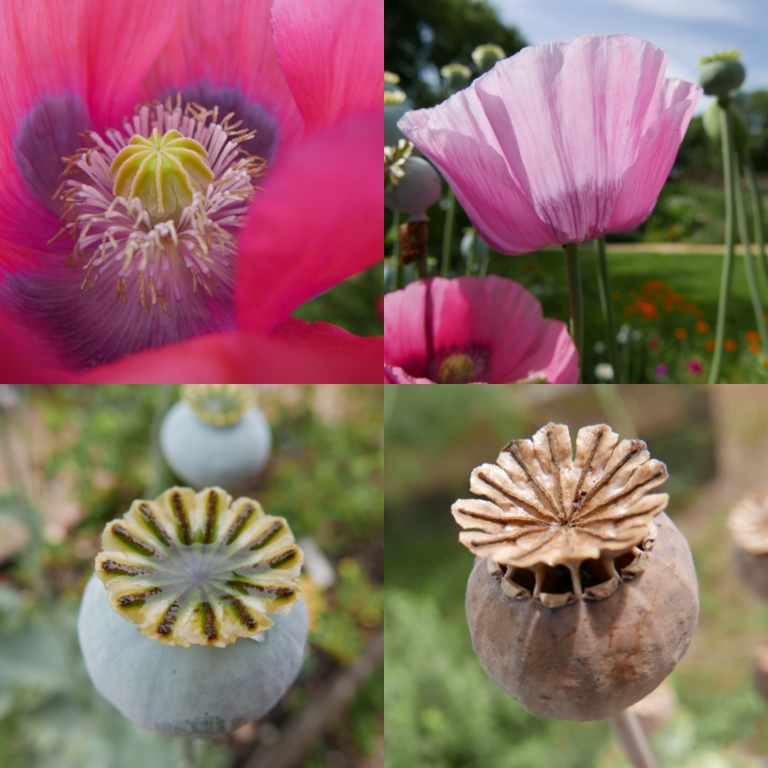
15. Collect poppy seeds
Collecting seeds from dried poppy heads is simple and easy you just gently shake the tiny seeds out onto into a container. To grow any of the seeds you have collected you just need to plant them in pots (or straight into the soil) with a little peat free compost and water to start them off. You can also store them for a year in a little envelope if you keep it in a cool dry place, just make sure the seeds are dry and any other plant material is removed before you place them In the envelope. We also like giving flower seeds we have collected as gifts to friends and family. We use wrapping paper to make little pocket envelopes and write simple growing instructions.

16. Sow poppy seeds
Poppies are fantastic flowers to grow for pollinators. Did you know that a third of the food we eat comes from plants that rely on pollination? Even medicines and materials like morphine, aspirin and cotton are derived from pollinated plants? Yet pollinator species across the world are in drastic decline due to widespread pesticide use and the loss of habitats.

This is why its so important to help pollinators like bees, butterflies, moths, hover flies and beetles by providing food and egg laying spaces for them. You can easily do this by growing as many wildflowers and pollinator friendly plants and flowers as you can like poppies, thereby provide a source of food for all year round as well as giving them the plants they need to lay their eggs on.
If you like this you might like to try:

13 Christmas nature play ideas
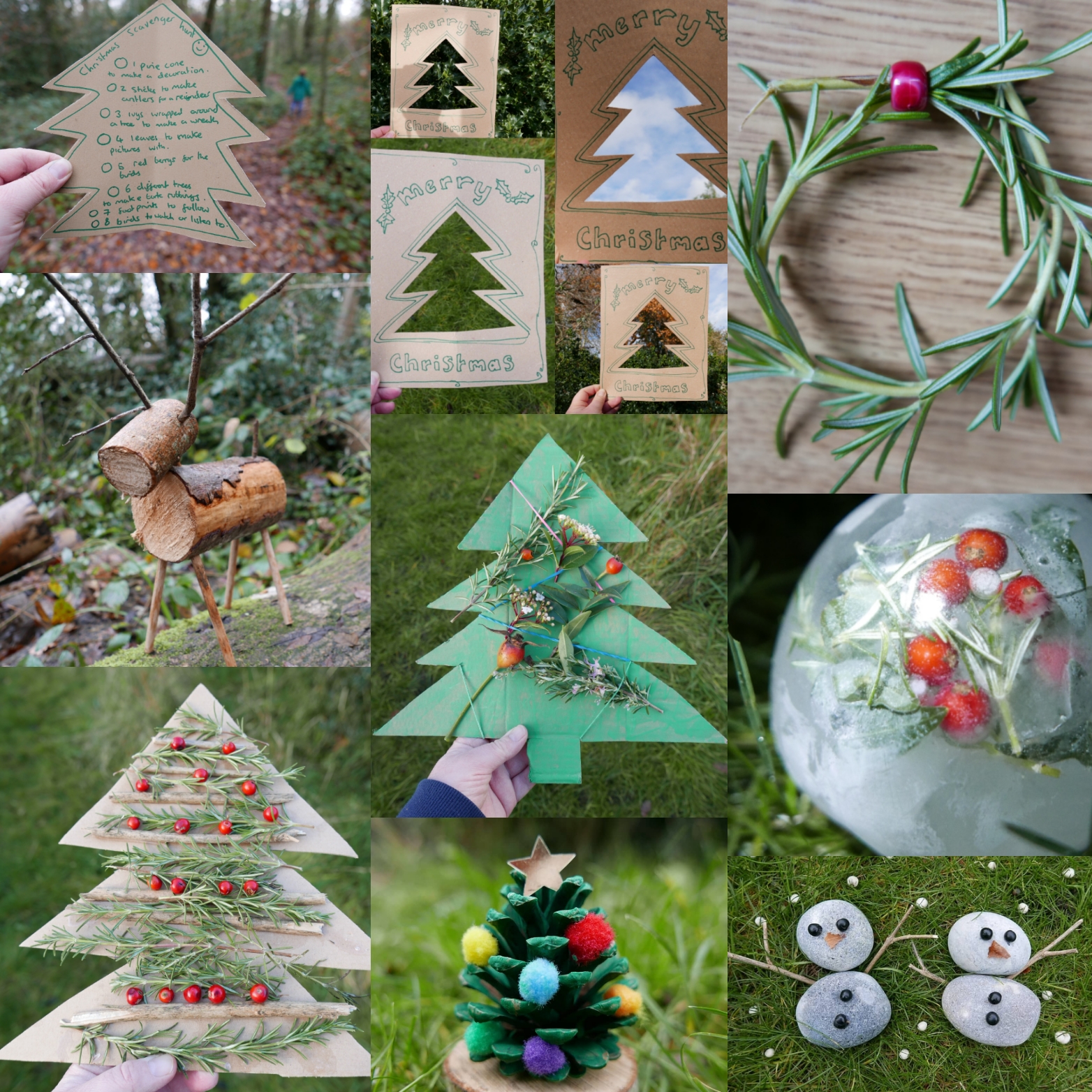



4 thoughts on “16 Remembrance day poppy activity ideas”